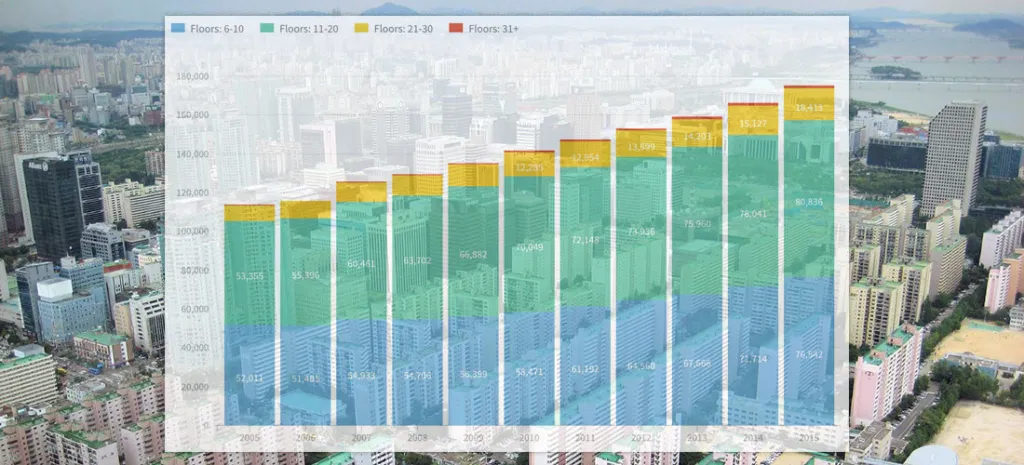
South Korea's (Residential) Rise: How Building Heights, Home Sizes Vary
Note: I followed my wife, a foreign correspondent for NPR News, to Seoul last year. This is one of a series of posts exploring our adopted country's demographics, politics and other nerdy data stuff. Let me know if you have ideas for future posts.
I never lived in a high-rise building before moving to South Korea, but now home is 35 stories above central Seoul. The view is pretty great — when, of course, it isn't obscured by pollution.
I'm just one of about 10 million Seoul residents in a geographic footprint the size of Chicago, so high-rise residential seems normal. How common is it, though, and how has that changed over time? These charts attempt to answer.
South Korea's population is about 50 million, and it has almost seven million residential buildings. But most of those structures are five stories or less, according to the most recent government census. A small proportion — about 180,000 — are taller. And an even smaller group of them are taller than 30 stories: About 1,400.
(For a rough comparison: The United States has about 320 million residents and just over 130 million housing units. About 2.6 million of residences in America are within structures seven stories are taller, according to the U.S. Census Bureau).
This second chart shows the breakdown of such buildings inside and outside Seoul, the capital. The number of high-rise residential buildings in others cities has increased relatively rapidly over time, while Seoul has remained somewhat constant in recent years:
Here's a breakdown of those buildings taller than five stories, by size. The tallest buildings — those above 30 stories — are a tiny fraction of the overall building census.
And, of course, height is just one dimension when it comes to living in South Korea. There's also the interior size, which varies as much as the altitude. Our high-rise apartment is a decent size, about 1,800 square feet, but plenty of homes are larger.
Residences in Seoul and its adjacent province, Gyeonggi, for example, are more likely to have additional space — perhaps because more wealth is concentrated here. On the other hand, about two thirds of the residences in South Jeolla Province, or Jeonnam, are less than 100 square meters (a little more 1,000 square feet). About half of them nationwide are this size, according to the government data. Here's a breakdown of the size categories:
So, in short, I feel pretty good about my crib here.
Credit: Illustration background image courtesy Francisco Anzola